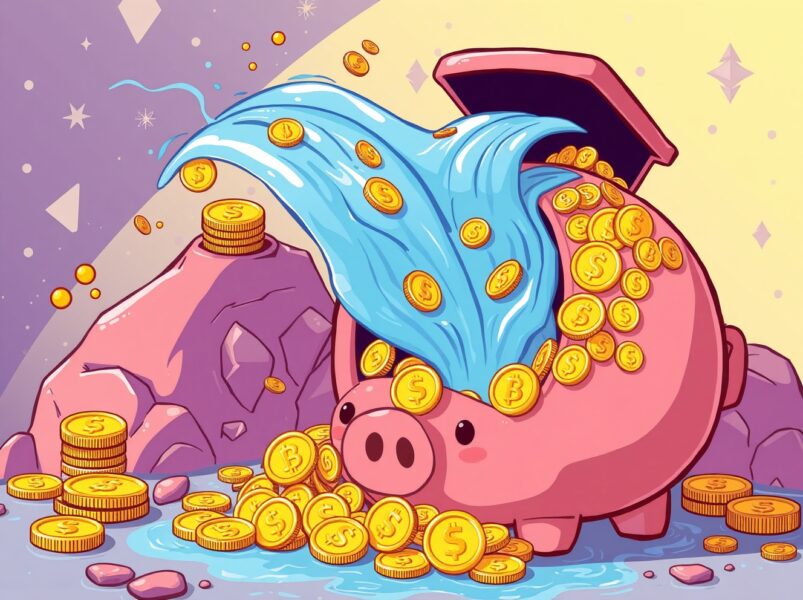Jerry Bruckheimer at the ‘F1’ New York Premiere in New York, New York.
Variety via Getty Images
As legendary producer and Hollywood kingmaker Jerry Bruckheimer continues his awards season promotional tour for smash-hit sports drama F1, he’s the first to acknowledge that the industry is hurting. As theaters continue to struggle to get butts in seats, the Brad Pitt-led film is one of only a handful of this year that have not only succeeded but exceeded expectations.
So, what does he believe is the key to not just getting the green light for an original film, but also getting audiences to turn out and buy tickets, aside from casting an A-list actor in the starring role?
“It’s got to be really good,” he says over Zoom from London, England. “You have a kitchen in your home, but you like to go out to eat. Now, you don’t go out to eat at any restaurant. You only go out to restaurants that serve you good food. That’s what we have to do. We got to make really good movies. There are a lot of good movies, but the audience doesn’t always embrace all of them. If we make good movies that audiences embrace, then you have a hit movie.”
“It takes so much energy, time, and great writers. The writers are the most important thing in a movie. Let’s face it, without a great screenplay, you don’t get a great director, a great actor, and you don’t get a green light. It comes down to brilliant writing and unique, fresh, and interesting ideas. Then, all of a sudden, you have a surprise like Minecraft. It’s a big game, and it becomes a billion-dollar movie out of the blue. Nobody expected that. It was the same thing with Top Gun. It came out of nowhere because it’s emotional. I’ll keep saying it over and over again. It’s an emotional journey of our characters. When you have brilliant actors and great screenwriting, you have (racing driver) Lewis Hamilton and director Joseph Kosinski, and you can make something that’s authentic. It’s what I call a process movie. It takes you inside a world you’ll never be a part of and shows you how it actually works. I have built a whole career on it.”
And he has. A prolific producer for decades, he is the man behind crowd-pleasing smash hits as Top Gun and Top Gun: Maverick, and the Pirates of the Caribbean, Bad Boys, and Beverly Hills Cop franchises. Not only that, but his resume also includes The Rock, Armageddon, Enemy of the State, Coyote Ugly, and Days of Thunder. Putting the audience in the character’s driving seat, no pun intended, is what he prides himself on. That’s his special sauce.
“We did it with CSI for television, and with Top Gun on the big screen, it puts you inside the world of these jet fighter pilots,” Bruckheimer explains. “I did it with Black Hawk Down, which showed you how a military operation is and how these guys suffered through it. I’ve done it over and over again with Remember the Titans and Glory Road, telling stories that are important about people who should be remembered today. They are remembered because we make movies about them.”
‘F1’ Is A Movie That People Want So See Again And Again
F1, also referred to as F1 The Movie, stars Pitt as Sonny Hayes. Once the motorsport’s most promising driver in the 1990s, an accident on the track nearly ended his career. Thirty years later, he is convinced to return to racing by team owner Rubén Cervantes, played by Javier Bardem, his friend and former Lotus teammate. To take his shot at redemption, he has to drive alongside hotshot rookie Joshua Pearce, played by Damson Idris. F1 is an Apple Films movie.
“None of this would have been possible without Apple,” the filmmaker enthuses. “You talk about streamers, so when they see Apple, and think, ‘I’ll wait until it’s on streaming.’ The movie came out in June. It was still in the theaters in September. It doesn’t start streaming until December. That’s the commitment they made to theaters, to make this movie the right way, to show it the right way, and then to give it to their subscribers so they could see it over and over again. The people who saw it originally in the theater, I promise you will see it again.”
One of the year’s most successful original films, F1 has grossed over $629.5 million worldwide to date. It landed with audiences and critics alike, even though F1, or Formula 1, is a sport many Americans are not overly familiar with.
“We made a movie that people wanted to see, they saw it and enjoyed it,” the filmmaker states. “It’s the number one grossing sports movie ever, it’s Brad Pitt’s highest grossing movie ever, and it’s the highest grossing movie in IMAX this year. These are amazing accomplishments for a movie in America, where nobody has heard of F1. When we did a blind preview, which is where you take 20 people from the audience and you ask them questions. The first question was ‘How many of you are aware of F1?’ One hand went up. The fact that word of mouth has made this movie an enormous success, and that’s because of the people sitting next to me, the rest of our cast, and a great director, proves it was an amazing accomplishment. All these artisans leaned in for a year, and most of them for two years, to put their energy into the time to make this a really authentic, emotional story.”
Jerry Bruckheimer, Lewis Hamilton and director Joseph Kosinski attend an Apple Films Special Screening of ‘F1’ at the Academy Museum of Motion Pictures in Los Angeles, California.
Apple TV+ via Getty Images
An ‘F1’ Sequel Is Being Discussed
It’s also inevitable that, given how well it has gone down, audiences and the industry’s head honchos are going to be looking for another lap. We know that the sequel has been discussed, but where is it at right now?
“We met with Lewis Hamilton a couple of weeks ago, and started talking about some ideas,” Bruckheimer reveals, referring to the British racing driver who serves as a producer and technical advisor on the film, as well as appearing in the movie as himself. “We’re in London right now, and we’ve screened the movie twice every night for the last three nights. We have the audience in there, and the first question I ask them is, ‘How many of you have not seen this movie? 80 percent of the hands go up, and it’s unbelievable. The other 20 percent have seen it several times. People that haven’t seen it say, ‘Oh, it’s not my kind of movie.’ It is your kind of movie. It’s emotional, fun, and it’s a great night out at the theater.”
Even Bruckheimer, a man with so much breathtaking and thrilling action cinema under his belt, found the experience of making F1 an emotional journey. It’s something that will stay with him forever.
“If you’re going to make a movie about F1, then you had better do it for real, and that’s what Joe and our whole team wanted to do,” the filmmaker offers. “They spent four months training in these cars, starting with an F4, then an F2, and finally our car. It was an experience that we couldn’t have done without F1. Stefano Domenicali is the President and CEO of Formula 1, really leaned in and helped make this movie as authentic as possible so we could travel to nine different tracks.”
“My favorite is Silverstone. It’s the home of F1, and you have to be there to experience it. There are 400,000 people there. They’re in campers, camping out the entire weekend. It’s a huge operation. It’s almost like a Woodstock, and it’s a great racetrack. It’s unbelievable. To have a great race, you need to be able to pass. When you have a street race like Monaco, whoever qualifies first or second is going to win the race unless they have a mechanical problem, because you can’t pass, but at Silverstone, you can. It also has run-offs, so if you miss a corner, you don’t kill yourself.”
Bruckheimer concludes, “I don’t know if I said this before, but the scariest thing for me was when Brad and Damson did Las Vegas. Vegas is a street race, so if they miss a turn, they’re into the wall. They were such good drivers, and I think that was our second-to-last race, and they were so accomplished that they hit the street at phenomenal speeds and didn’t spin out. It was amazing. One of the most exciting F1 races is Mexico, because the fans are insane and crazy about it. We have some great tracks here right now. The only thing F1 needs is an American team. That’s what they’re missing. They have an American team, but no American driver, and that’s what will change the sport.”
Source: https://www.forbes.com/sites/simonthompson/2025/10/29/jerry-bruckheimer-on-what-makes-a-hit-movie-and-an-f1-sequel/


